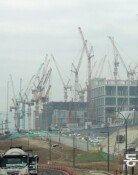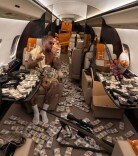[Opinion] 17 Trillion Won
It is not easy for the common people, who hardly look at even 100 million won (roughly 100,000 US dollars) in cash in their life, to realize how much money a trillion won is. To imagine the physical size of a trillion won is helpful in this case. When we pile up 100 million won in ten-thousand-won notes, the height reaches about 110 meters. A total of 237 million won in ten-thousand-won notes is necessary to reach as high as Mt. Namsan. The height of one trillion won is equivalent to that of sum of Mt. Everest, Mt. Halla, and Mt. Namsan.
Overseas cash outflows for traveling abroad and medical services last year were estimated at more than 17 trillion won. It is understood that the money is equivalent to 174 Mt. Namsans on the basis of ten-thousand notes spent on a trip abroad, 309 Mt. Namsans on study abroad, and 220 Mt. Namsans on business services, including advertising medical and judicial affairs. Of course, it is hard to consider that all the money had been squandered. Some amounts of money will contribute to elevating the quality of human capital and creating higher added value in domestic industries.
Nevertheless, the reason for having an unsatisfied feeling is because if this money was spent domestically, our economy would not have suffered from the serious depression that it is now. It is said that if 17 trillion won was circulated within the country, the GDP growth rate would be raised by 1.9 percentage points. When calculating this in jobs, this is equivalent to the amount needed to relieve more than 90,000 unemployed people. We have to make money circulate within the country instead of letting it flow abroad in order to boost the economy in the future.
The problem is how to do it. It can be partly effective if the government discloses its situation to the people, saying please spend your money within the country during the Lunar New Year. However, there is a limit on appealing to patriotism in the country, which intends to be an open and trade-oriented economy in the era of unavoidable globalization. The basic solution is to enhance competitiveness in educational, medical, and legal industries as well as tourism and leisure industries through their gradual opening, and to make an atmosphere in which the rich can spend their money within the country. Market protection is meaningful only when overseas and domestic markets are clearly distinguished. The crossbar of protectionism is useless in an environment where consumers frequent the border, looking for better services on their own.
Editorial, Cheon Gwang-am, iam@donga.com



![화장실 갇혔을 때 생존법…“최후에는 변기뚜껑” [알쓸톡]](https://dimg.donga.com/c/138/175/90/1/wps/NEWS/IMAGE/2025/12/26/133042007.3.png)



